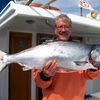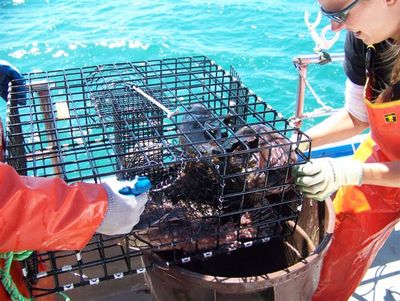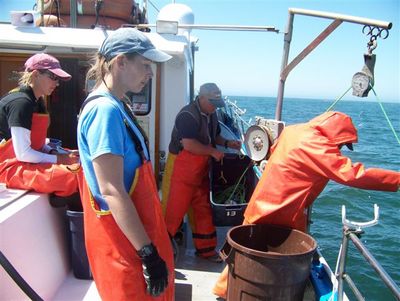Huli Cat spent two days in the rserve tiself and two days in the area adjacent to the marine reserve testing commercial fish traps in order to examine the CPUE (Catch Per Unit of Effort). Traps were deployed in areas that looked good for bottom structure and other potenital signs of fish accomodations like kep beds. Ten traps were deployed per cell in two groups, 20 traps per cell. The traps remained in the area for one hour and were retrieved. The traps were baited with one pound of squid each. In between deploying hte first set5 of ten traps and the second set of ten traps, water temperature was checked fromthe surface to the bottom with a probe that records every second. Water clarity was checked with a Secchi disk. The best day was 38 fish. Best trap score was four fish per trap. Fish were measured for length and tagged and released. Anglers that catch tagged fish are asked to record the tag number, location and size. There is a Reward for return of tag info. Three grid cells were examined each day. The science personnel were from Moss Landing Marine Lab and the study is conducted under Dr. Rick Starr. Capt. Tom Mattusch was a member of the Regional Study Groups that helped set up the MPA's on the Central and North Central coast.



